Group O red cell toolkit
This toolkit is for clinical and laboratory staff and provides information to help promote the safe and appropriate use of group O red cells, and prevent wastage.
This toolkit replaces the O D positive toolkit and the O D negative red cell toolkit.
O D negative red blood cells are commonly used in emergencies where the patient's blood group is unknown. This can put pressure on the supply of this limited resource.
Collecting enough O D negative blood is a constant challenge for blood services across the world. In England, NHS Blood and Transplant called amber alerts in 2022 and 2024 for O D negative red cells.
Guidance promotes using O D positive red cells for males aged over 18 in emergency situations, to conserve O D negative red cells for patients for whom there is no alternative.
(The terms 'male', 'female' used in any of the information on this page relates to the patient’s sex assigned at birth).
In this section
Pages in the 'Appropriate use of blood components' section
Infographics
These infographics are designed for you to use alongside appropriate text in presentations and educational resources. Please acknowledge the NHS Blood and Transplant Patient Blood Management team as the author.
Consider using O D positive
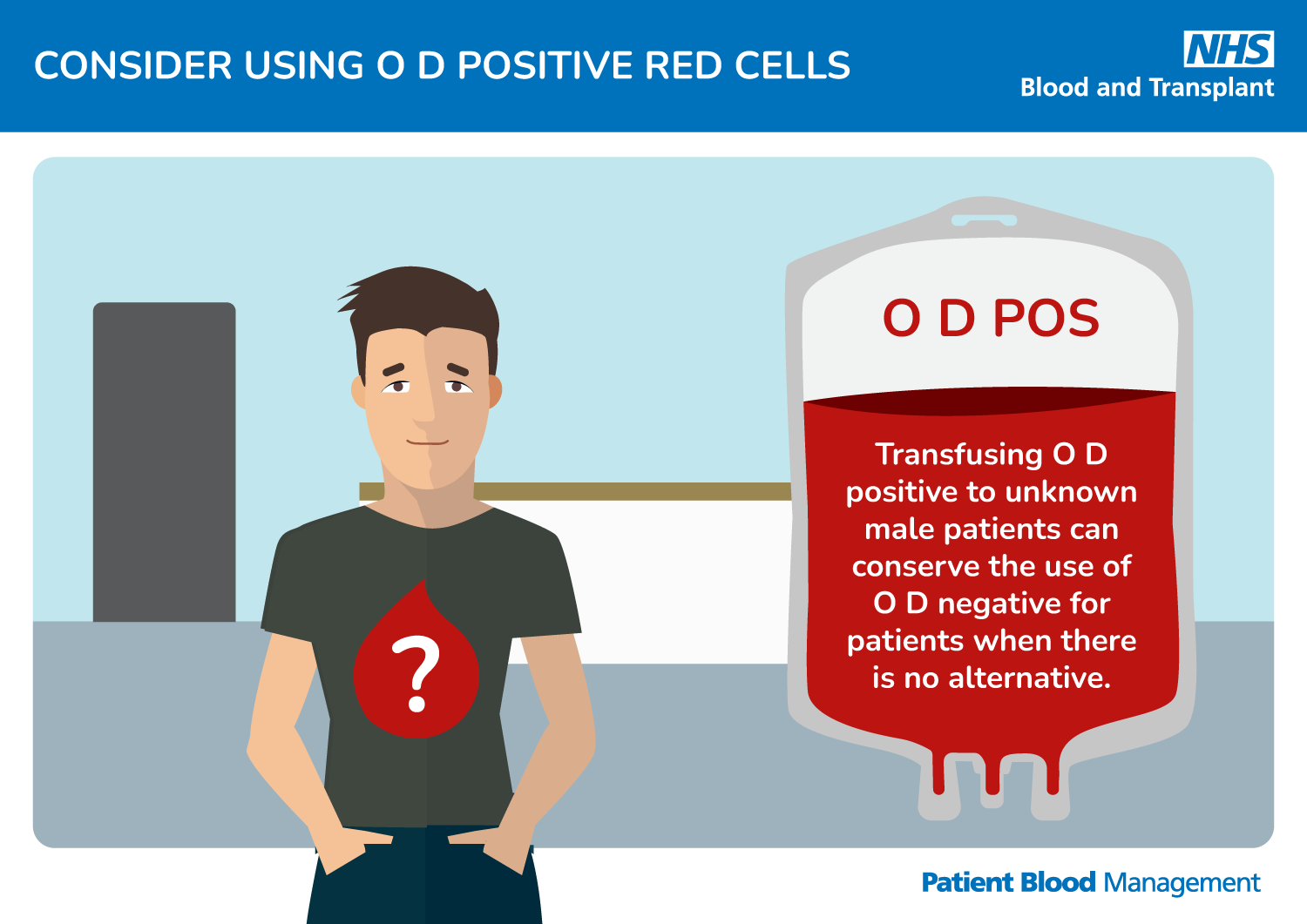
Text reads: "Consider using O D Pos. Transfusing O D positive to unknown male patients can conserve O D negative blood for patients who have no alternative."
Emergency red cell specification
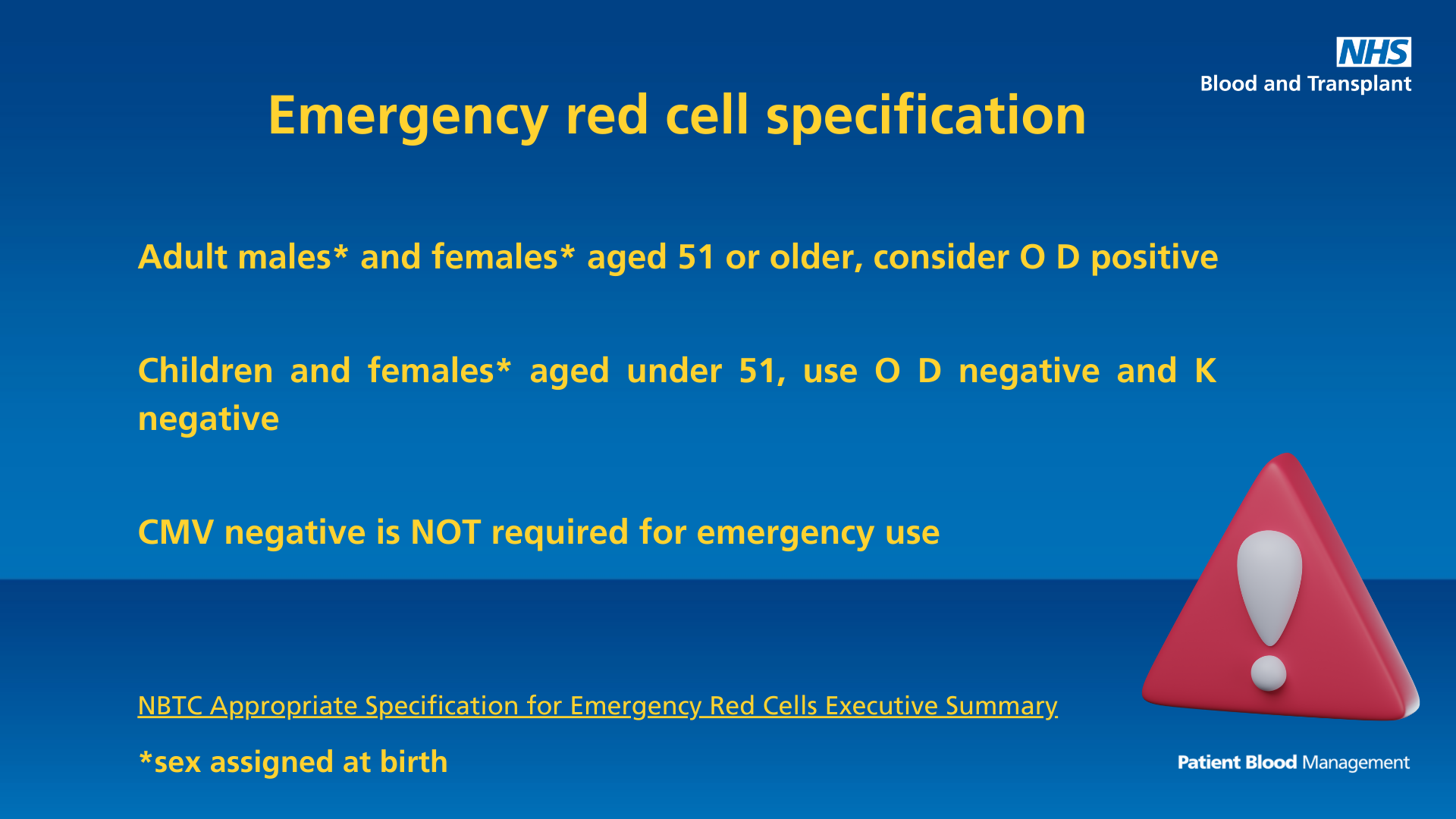
Text reads: "For adult males and females aged 51 or older, consider O D positive.
Children and females aged under 51, use O D negative and K negative.
CMV negative is not required for emergency use.
The terms 'male', 'female' used in this graphic relate to sex assigned at birth."
NBTC appropriate specification for emergency red cells executive summary
O D negative red cells outside of the laboratory
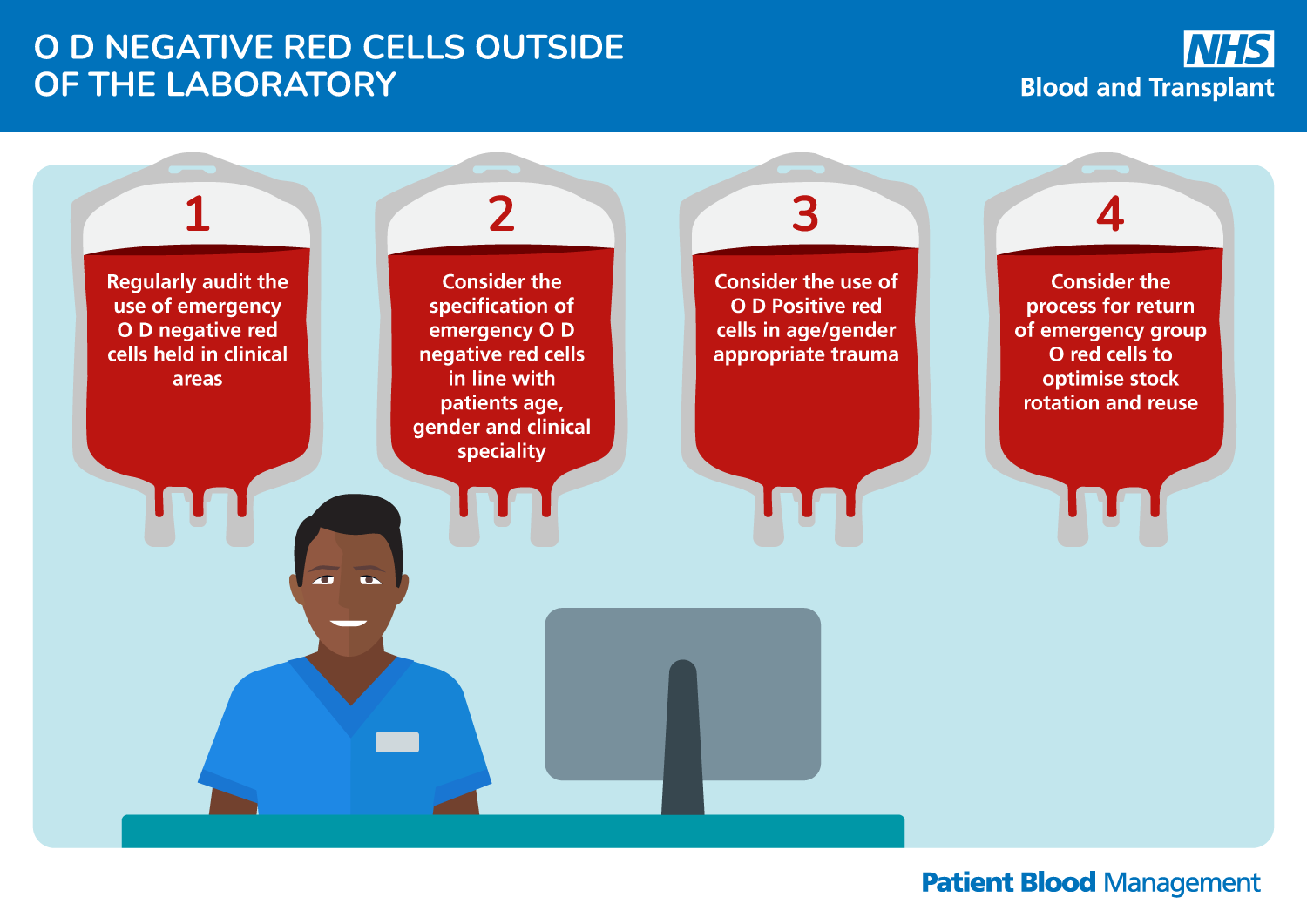
Text reads: "O D negative red cells outside of the laboratory.
- Regularly audit the use of emergency O D negative red cells held in the clinical areas for appropriate use.
- Consider the specification of emergency O D negative red cells in line with patient demographics and clinical speciality.
- Explore the use of O D positive red cells in age/gender appropriate trauma where possible.
- Consider the interval and mechanism for review of emergency group O red cells to ensure optimum stock rotation."
Laboratory management of O D negative red cells
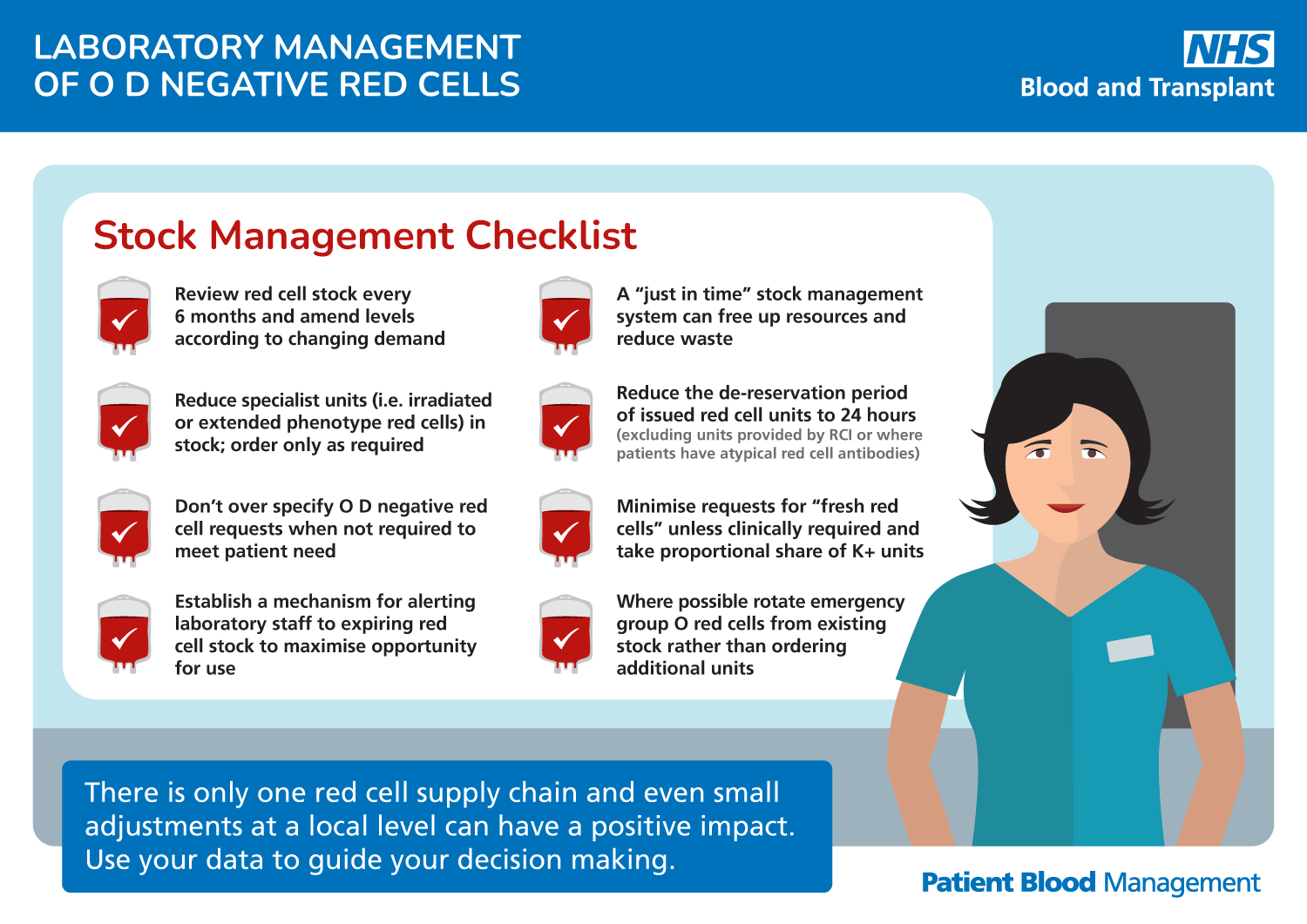
Text reads: "Laboratory management of O D negative red cells.
Stock management checklist:
- Review red cell stock every 6 months and amend levels according to demand.
- A 'just in time' stock management system can free up resources and reduce wastage.
- Reduce specialist units (i.e. irradiated or extended phenotype red cells) in stock, order only as required.
- Reduce the de-reservation period of issued red cell units to 24 hours (excluding units from RCI or where patients have atypical antibodies)
- Don’t over specify O D negative red cell requests when not required to meet patient demands.
- Limit requests for 'fresh red cells' and take a proportional share of K+ units.
There is only one red cell supply chain and even small adjustments at a local level can have a positive impact. Use your data to guide your decision making."
Stock sharing
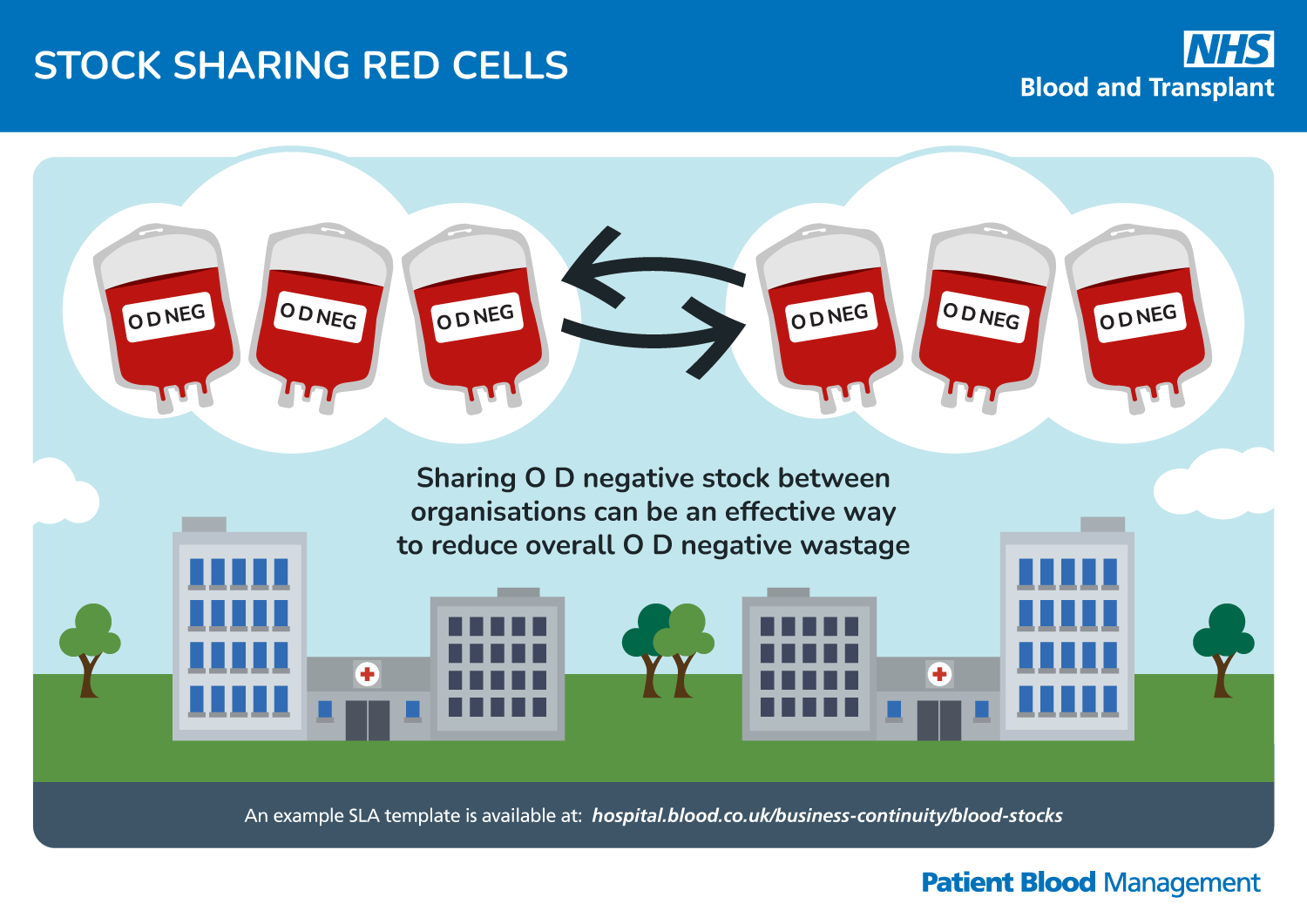
Text reads: "Sharing of O D negative stock between organisations would support an overall reduction in O D negative within the system."
Share your learning
Tell us about your group O red cell projects, highlighting your successes or where things didn't go so well, and we'll include them on this page.
Contact us at: pbm.team@nhsbt.nhs.uk
Page last reviewed: 10 February 2025
